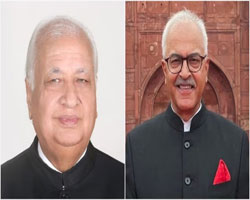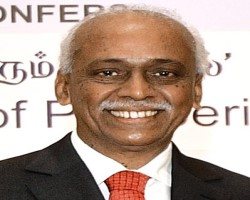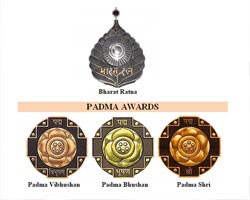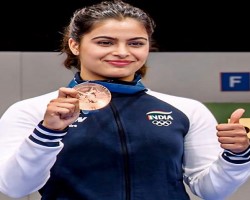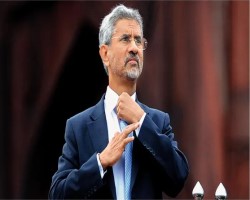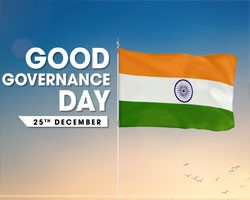SSC Current Affairs
TABLE OF CONTENTS |
||||||||||||||||||||||||||||||||||||||||||||||||||||||||||||||||||||||||||||||||||||||||||||||||||||||||||||||||||||||||||||||||||||||||||||||||||||||||||||
| Polity and Governance | ||||||||||||||||||||||||||||||||||||||||||||||||||||||||||||||||||||||||||||||||||||||||||||||||||||||||||||||||||||||||||||||||||||||||||||||||||||||||||||
|---|---|---|---|---|---|---|---|---|---|---|---|---|---|---|---|---|---|---|---|---|---|---|---|---|---|---|---|---|---|---|---|---|---|---|---|---|---|---|---|---|---|---|---|---|---|---|---|---|---|---|---|---|---|---|---|---|---|---|---|---|---|---|---|---|---|---|---|---|---|---|---|---|---|---|---|---|---|---|---|---|---|---|---|---|---|---|---|---|---|---|---|---|---|---|---|---|---|---|---|---|---|---|---|---|---|---|---|---|---|---|---|---|---|---|---|---|---|---|---|---|---|---|---|---|---|---|---|---|---|---|---|---|---|---|---|---|---|---|---|---|---|---|---|---|---|---|---|---|---|---|---|---|---|---|---|---|
|
|
||||||||||||||||||||||||||||||||||||||||||||||||||||||||||||||||||||||||||||||||||||||||||||||||||||||||||||||||||||||||||||||||||||||||||||||||||||||||||||
|
President Droupadi Murmu has recently appointed new governors for five Indian states, resulting in significant administrative changes. The key appointments are as follows:
Arif Mohammed Khan: Previously serving as the Governor of Kerala, Khan has been reassigned to Bihar. Ajay Kumar Bhalla: A seasoned administrator and former Union Home Secretary, Bhalla has been appointed as the Governor of Manipur, succeeding Anusuiya Uikey. Dr. Hari Babu Kambhampati: Formerly the Governor of Mizoram, Kambhampati has been appointed as the Governor of Odisha. General Vijay Kumar Singh: The retired Army General has been appointed as the Governor of Mizoram. Rajendra Vishwanath Arlekar: Arlekar has been appointed as the Governor of Kerala. These appointments reflect the President's strategic decisions to bring experienced leadership to these states, aiming to enhance governance and address regional challenges effectively. About State Governor: The Governor of a state in India is a constitutional authority appointed under Article 153 of the Indian Constitution. The Governor acts as the constitutional head of the state, representing the President of India and ensuring that the state government operates within the framework of the Constitution. Constitutional Provisions Regarding Governors 1. Appointment and Term (Articles 153-157): Article 153: Mandates the office of Governor in every state. A single person can serve as the Governor for multiple states. Article 154: Vests the executive power of the state in the Governor. Article 155: The Governor is appointed by the President of India. Article 156: The Governor holds office for a term of five years but serves at the pleasure of the President. The President can remove the Governor or extend the term at their discretion. Article 157 & 158: The Governor must be a citizen of India, at least 35 years of age, and must not hold any office of profit. 2. Executive Powers (Article 162): The Governor is the executive head of the state, with all executive actions carried out in their name. Key Powers: Appointment of the Chief Minister and the Council of Ministers. Appointing the Advocate General and members of the State Public Service Commission. Supervising state administration and ensuring constitutional compliance. 3. Legislative Powers (Articles 163-164, 168, 213): Article 163: The Governor acts on the advice of the Council of Ministers, except in discretionary matters. Article 164: Appoints the Chief Minister and other Ministers. Ensures the Ministers hold office at the Governor's pleasure. Article 168: The Governor is part of the state legislature. Article 200: The Governor can give assent, withhold assent, or reserve bills for the President’s consideration. Article 213: Allows the Governor to promulgate ordinances when the state legislature is not in session. 4. Judicial Powers (Article 161): Article 161: The Governor has the power to grant pardons, reprieves, respites, or remissions of punishment for offenses under state law. 5. Financial Powers (Article 202): Ensures that the Annual Financial Statement (state budget) is laid before the legislature. No money bill can be introduced in the state legislature without the Governor’s recommendation. 6. Discretionary Powers: Inviting a party to form the government in case of a hung assembly. Sending a report to the President under Article 356, recommending President’s Rule if the state government fails to function as per the Constitution. Reserving bills for the consideration of the President. Role and Responsibilities: Guardian of the Constitution: Ensures the state government adheres to constitutional principles. Mediator: Acts as a bridge between the State and Central Governments. Crisis Manager: Plays a crucial role during political crises, such as coalition government formation or constitutional breakdown. Challenges and Criticisms: Allegations of Central Influence: Governors are often accused of being biased towards the central government. Discretionary Powers Misuse: Recommendations for President’s Rule and inviting parties to form a government have occasionally led to controversies. Lack of Accountability: Since Governors are not elected, their actions can sometimes face public or political scrutiny. Significance in Federal Structure: Governors uphold the federal structure by maintaining the balance between the Union and the states. They act as a check on the arbitrary actions of the state government while protecting the state’s autonomy within the constitutional framework. The Governor’s office remains pivotal in India’s federal polity, ensuring that governance is carried out as per the Constitution. |
||||||||||||||||||||||||||||||||||||||||||||||||||||||||||||||||||||||||||||||||||||||||||||||||||||||||||||||||||||||||||||||||||||||||||||||||||||||||||||
|
|
||||||||||||||||||||||||||||||||||||||||||||||||||||||||||||||||||||||||||||||||||||||||||||||||||||||||||||||||||||||||||||||||||||||||||||||||||||||||||||
|
Why in the news?
A day after former Supreme Court judge V. Ramasubramanian was appointed Chairperson of the National Human Rights Commission (NHRC), Leader of the Opposition in the Rajya Sabha Mallikarjun Kharge and his Lok Sabha counterpart, Rahul Gandhi, registered their dissent on the grounds that the process adopted was “fundamentally flawed” and a “pre-determined” exercise that ignored mutual consultation and consensus. About National Human Rights Commission (NHRC): The National Human Rights Commission (NHRC) is a statutory body established to protect and promote human rights in India. Key Details: Established: October 12, 1993, under the Protection of Human Rights Act (PHRA), 1993. Headquarters: New Delhi. Objective: Safeguard the rights guaranteed by the Constitution of India and international human rights conventions. Composition: Chairperson: Must be a retired Chief Justice of India. Members: One serving/former judge of the Supreme Court. One serving/former Chief Justice of a High Court. Two experts with knowledge or experience in human rights. Ex-Officio Members: Chairpersons of commissions like the National Commission for Women (NCW), SC, ST, Minorities, and Backward Classes. Selection Process of the NHRC Chairperson: The appointment of the NHRC Chairperson is governed by the Protection of Human Rights Act, 1993 (as amended). Eligibility: The Chairperson of the NHRC must be a former Chief Justice of India (CJI). Selection Process Constitution of a Selection Committee: The Chairperson is selected by a high-level committee consisting of: Prime Minister (Chairperson of the committee). Speaker of the Lok Sabha. Deputy Chairman of the Rajya Sabha. Union Minister for Home Affairs. Leader of the Opposition in the Lok Sabha. Leader of the Opposition in the Rajya Sabha. Recommendation: The committee deliberates and recommends a candidate for the position of Chairperson. Appointment: The recommended name is approved by the President of India, who formally appoints the Chairperson. Tenure and Removal: Tenure: The Chairperson serves for a term of 3 years or until the age of 70 years, whichever is earlier. Removal: The Chairperson can be removed by the President under specific conditions, such as proven misbehavior, incapacity, or other valid reasons as per the Protection of Human Rights Act. The selection process ensures transparency and consensus among key leaders in the government and opposition, maintaining the neutrality and credibility of the NHRC. Functions: Investigates complaints of human rights violations by public servants or negligence in preventing violations. Reviews existing laws, policies, and safeguards to ensure human rights protection. Promotes awareness and research on human rights. Recommends measures to the government for improving the protection of human rights. Intervenes in court proceedings involving human rights issues (with permission). Powers: Can summon individuals, examine witnesses, and demand documents. Can visit places like prisons and detention centers to inspect living conditions. Makes recommendations, but its decisions are not legally binding. Limitations: Can only recommend actions; lacks enforcement powers. Cannot investigate cases older than one year from the date of occurrence. Jurisdiction is limited to public authorities; private entities are excluded. Overlaps with other human rights bodies at the state level. Significance: The NHRC acts as a watchdog for the protection of fundamental rights, ensuring accountability of public authorities and spreading awareness about human rights issues in India. |
||||||||||||||||||||||||||||||||||||||||||||||||||||||||||||||||||||||||||||||||||||||||||||||||||||||||||||||||||||||||||||||||||||||||||||||||||||||||||||
| Awards | ||||||||||||||||||||||||||||||||||||||||||||||||||||||||||||||||||||||||||||||||||||||||||||||||||||||||||||||||||||||||||||||||||||||||||||||||||||||||||||
|
|
||||||||||||||||||||||||||||||||||||||||||||||||||||||||||||||||||||||||||||||||||||||||||||||||||||||||||||||||||||||||||||||||||||||||||||||||||||||||||||
|
Subject: Polity
(Relevance: The Indian Civilian Awards are significant for the UPSC CSE, as they are the highest civilian honors in the country. In the past, UPSC has asked question on these awards; for instance, in the UPSC CSE prelims 2021, there was a question regarding the Bharat Ratna and Padma awards.) Why in the news? As controversy continues over Home Minister Amit Shah “insulting” Dr BR Ambedkar in Parliament, the BJP and its supporters have repeatedly cited one fact to claim that the Congress “did not respect” Babasaheb — that successive Congress governments did not award him the Bharat Ratna. In this context, let’s know about the Bharat Ratna and other civilian awards of India. Key Takeaways : 1. Awards serve as symbols of appreciation and honor given to individuals who have made notable achievements across various professions. Among the most prestigious honors are India’s Civilian Awards, which are announced annually on January 26th, Republic Day, and presented to the recipients by the President of India. 2. The Government of India had instituted two civilian awards, Bharat Ratna and Padma Vibhushan, in 1954. The latter had three classes, namely Pahela Varg, Dusra Varg and Tisra Varg. These were subsequently renamed as Padma Vibhushan, Padma Bhushan, and Padma Shri in 1955. Bharat Ratna: 1. The Bharat Ratna, also known as the ‘Jewel of India’ or ‘Gem of India’, is India’s highest civilian honour, bestowed upon individuals who have made exceptional contributions to the nation’s progress and prosperity. 2. Established in 1954 by then-President Rajendra Prasad, it is made of bronze and designed in the shape of a peepal leaf, embossed with the sun. The reverse side bears India’s emblem, the ‘Ashok Chakra’, and the motto, ‘Satyameva Jayate’. 3. Initially awarded for achievements in literature, science, the arts, and public services, the Indian government expanded the criteria in 2011, as it is a symbol of national gratitude and recognition, impacting India and its people through its contributions. 4. The recommendations for Bharat Ratna are made by the Prime Minister to the President. No formal recommendations for this are necessary. The Prime Minister is free to consult or obtain advice from any one he chooses. However, as per practice, the Ministry of Home Affairs (MHA) receives several recommendations, which are forwarded to the Prime Minister’s Office. The MHA is the nodal ministry for these awards. 5. The number of awards is normally restricted to a maximum of three in a year. The recipient or (if posthumously) someone on his/her behalf receives a Sanad (certificate) signed by the President and a medallion. It does not carry any monetary grant. 6. As per the Table of Precedence issued by the MHA, Bharat Ratna awardees find place just behind Union Cabinet Minister. Do you know? As per Article 18 (1) of the Indian Constitution, the award cannot be used as a prefix or suffix to the recipient’s name. “No title, not being a military or academic distinction, shall be conferred by the State,” the Article states. However, an award winner can write “Awarded Bharat Ratna by the President” or “Recipient of Bharat Ratna Award,” in their biodata or letterhead, the MHA states. Padma Awards: 1. Padma Awards, one of the highest civilian awards of the country, are conferred in three categories, namely, Padma Vibhushan, Padma Bhushan and Padma Shri. 2. The awards are given in various disciplines and fields of activities – art, social work, public affairs, science and engineering, trade and industry, medicine, literature and education, sports, civil service, etc. 3. Except for interruptions in 1978, 1979 and between 1993 and 1997, every year the names of the recipients of Padma Awards are announced on Republic Day eve and are conferred by the President of India at ceremonial functions which are held at Rashtrapati Bhawan usually in March – April every year. 4. The awardees do not get any cash reward but a certificate signed by the President apart from a medallion which they can wear at public and government functions. 5. While a Padma awardee can be given a higher award (i.e. a Padma Shri awardee can receive a Padma Bhushan or Vibhushan), this can only happen after five years of the conferment of the previous award. 6. Notably, all persons without distinction of race, occupation, position or sex are eligible for these awards. However, government servants including those working with PSUs, except doctors and scientists, are not eligible for these awards. 7. There is no rigid criteria or trenchant formula for selection, according to MHA. However, the lifetime achievement of an individual is among the main considerations. 8. All nominations received for Padma awards are placed before the Padma Awards Committee, which is constituted by the Prime Minister every year. The Padma Awards Committee is headed by the Cabinet Secretary and includes Home Secretary, Secretary to the President and four to six eminent persons as members. The recommendations of the committee are submitted to the Prime Minister and the President of India for approval. Padma Vibhushan: Padma Vibhushan is the second in the hierarchy of civilian awards. It was instituted in 1954 and is awarded for exceptional and distinguished service. Following are the five Padma Vibhushan Awardees of 2024: 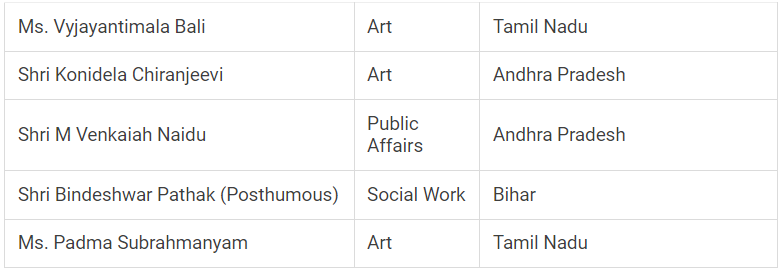 Padma Bhushan: Ranking third in the hierarchy of civilian awards, Padma Bhushan was instituted in 1954 as well. It is awarded for distinguished service of a high order to the nation in any field, including services rendered by government servants like doctors and scientists, excluding those working with public sector undertakings. Padma Shri: The fourth-highest civilian award in the Republic of India, Padma Shri, was instituted in 1954. It is given to Indian citizens in recognition of their outstanding contributions in a variety of fields, including the services provided by government employees. Bharat Ratna Awardees from 1954 till 2024: Here is a list that highlights the diverse contributions of each awardee, ranging from arts and music to politics and science, reflecting the broad scope of the Bharat Ratna award in recognising exceptional service of the highest order.
|
||||||||||||||||||||||||||||||||||||||||||||||||||||||||||||||||||||||||||||||||||||||||||||||||||||||||||||||||||||||||||||||||||||||||||||||||||||||||||||
|
|
||||||||||||||||||||||||||||||||||||||||||||||||||||||||||||||||||||||||||||||||||||||||||||||||||||||||||||||||||||||||||||||||||||||||||||||||||||||||||||
|
Why in the news?
Amid a raging controversy over Manu Bhaker “exclusion” from the list of Khel Ratna nominees, double Olympic medallist Manu Bhaker said “there has been a lapse, maybe on my part while filing for the nomination”. About Major Dhyan Chand Khel Ratna Award: 📍The Rajiv Gandhi Khel Ratna Award will hereby be called the Major Dhyan Chand Khel Ratna Award. 📍The now renamed Major Dhyan Chand Khel Ratna award comes with a cash prize of Rs 25 lakh. 📍Rajiv Gandhi Khel Ratna Award is the highest sporting award given by the Ministry of Youth Affairs and Sports for the spectacular and most outstanding performance in the field of sports by a sportsperson over a period of four years. 📍The award comprises a medallion, a certificate, and a cash prize of Rs 7.5 lakh. 📍The Khel Ratna award was instituted in 1991-1992 and the first recipient was Chess legend Viswanathan Anand. Among the other winners were Leander Paes, Sachin Tendulkar, Dhanraj Pillay, Pullela Gopichand, Abhinav Bindra, Anju Bobby George, Mary Kom and Rani Rampal in 2020. About Major Dhyan Chand: 📍Known as The Wizard, Major Dhyan Chand, a field hockey player, played international hockey from 1926 to 1949, scoring over 400 goals in his career. 📍Dhyan Chand, born in Allahabad, was part of the Olympic team that won gold medals in 1928, 1932 and 1936. Apart from the Khel Ratna award, the country’s highest award for lifetime achievement in sports is known as the Dhyan Chand Award. It was instituted in 2002. 📍The National Stadium in New Delhi was also renamed as the Dhyan Chand National Stadium in 2002. 📍The National Sports Day is observed every year across India on 29th August to mark the birth anniversary of Major Dhyan Chand who was born on 29th August 1905. 📍The President of India on this occasion honours the eminent athletes from various sports with the prestigious Khel Ratna, Arjuna Awards, Dronacharya Awards, and Dhyan Chand Award. |
||||||||||||||||||||||||||||||||||||||||||||||||||||||||||||||||||||||||||||||||||||||||||||||||||||||||||||||||||||||||||||||||||||||||||||||||||||||||||||
|
|
||||||||||||||||||||||||||||||||||||||||||||||||||||||||||||||||||||||||||||||||||||||||||||||||||||||||||||||||||||||||||||||||||||||||||||||||||||||||||||
|
On December 22, 2024, External Affairs Minister Dr. S. Jaishankar was honored with the Sri Chandrasekarendra Saraswathi National Eminence Award for Public Leadership by the South Indian Education Society (SIES).
About the Award: The award is named after Sri Chandrasekarendra Saraswathi, the 68th Shankaracharya of the Kanchi Kamakoti Peetham, revered for his spiritual leadership and contributions to Indian society. The South Indian Education Society, one of India's oldest educational institutions, presents this award to individuals who have demonstrated exceptional leadership in public life. Dr. Jaishankar's Acceptance Remarks: In his acceptance speech, Dr. Jaishankar expressed gratitude for the honor and reflected on the teachings of Maha Periyavar (Sri Chandrasekarendra Saraswathi). He emphasized the importance of embracing India's cultural heritage and traditions while navigating contemporary challenges. He highlighted India's independent stance on global issues, commitment to the Global South, and the nation's journey towards prosperity, guided by its civilizational heritage. Significance of the Award: This recognition underscores Dr. Jaishankar's contributions to India's foreign policy and his leadership in enhancing India's stature on the global stage. It also reflects the alignment of his work with the values and vision espoused by Sri Chandrasekarendra Saraswathi, particularly in promoting universal brotherhood and compassion. |
||||||||||||||||||||||||||||||||||||||||||||||||||||||||||||||||||||||||||||||||||||||||||||||||||||||||||||||||||||||||||||||||||||||||||||||||||||||||||||
| Appointments and Resigns | ||||||||||||||||||||||||||||||||||||||||||||||||||||||||||||||||||||||||||||||||||||||||||||||||||||||||||||||||||||||||||||||||||||||||||||||||||||||||||||
|
|
||||||||||||||||||||||||||||||||||||||||||||||||||||||||||||||||||||||||||||||||||||||||||||||||||||||||||||||||||||||||||||||||||||||||||||||||||||||||||||
|
Justice V. Ramasubramanian, a former judge of the Supreme Court of India, has been appointed as the Chairperson of the National Human Rights Commission (NHRC) on December 23, 2024.
Background and Career: Early Life and Education: Born on June 30, 1958, in Mannargudi, Tamil Nadu, Justice Ramasubramanian pursued his education at Ramakrishna Mission Vivekananda College and Madras Law College. Judicial Career: Appointed as a judge of the Madras High Court on July 31, 2006. Transferred to the Telangana High Court on April 27, 2016. Served as the Chief Justice of the Himachal Pradesh High Court from June 22, 2019, to September 22, 2019. Elevated to the Supreme Court of India on September 23, 2019, and served until his retirement on June 29, 2023. Appointment as NHRC Chairperson: Justice Ramasubramanian's appointment fills the vacancy left by Justice Arun Kumar Mishra, who retired as NHRC Chairperson on June 1, 2024. Significance: Notably, Justice Ramasubramanian is the second NHRC Chairperson who has not served as the Chief Justice of India, following Justice Arun Kumar Mishra. NHRC Overview: The NHRC is a statutory body established on October 12, 1993, under the Protection of Human Rights Act, 1993. Its primary objective is to protect and promote human rights in India. The Commission comprises a Chairperson and several members, including judges and experts in human rights. Justice Ramasubramanian's extensive judicial experience is expected to contribute significantly to the NHRC's mission of safeguarding human rights across the nation. Controversy Surrounding Appointment: Dissent from Opposition: Mallikarjun Kharge (Leader of Opposition in the Rajya Sabha) and Rahul Gandhi (Leader of Opposition in the Lok Sabha) expressed disagreement. Claimed the selection process was flawed and lacked mutual consultation and consensus. Described the process as "pre-determined" and not inclusive of opposition views. |
||||||||||||||||||||||||||||||||||||||||||||||||||||||||||||||||||||||||||||||||||||||||||||||||||||||||||||||||||||||||||||||||||||||||||||||||||||||||||||
| Important Days | ||||||||||||||||||||||||||||||||||||||||||||||||||||||||||||||||||||||||||||||||||||||||||||||||||||||||||||||||||||||||||||||||||||||||||||||||||||||||||||
|
|
||||||||||||||||||||||||||||||||||||||||||||||||||||||||||||||||||||||||||||||||||||||||||||||||||||||||||||||||||||||||||||||||||||||||||||||||||||||||||||
|
Good Governance Day is observed annually on December 25 in India to commemorate the birth anniversary of Atal Bihari Vajpayee, a former Prime Minister of India and Bharat Ratna awardee. The day highlights the importance of transparency, accountability, and responsiveness in the administration to ensure effective governance. The observance of Good Governance Day on December 25, 2024, also marks the 100th birth anniversary of former Prime Minister Atal Bihari Vajpayee, whose leadership exemplified the principles of good governance, focusing on accountability, transparency, and inclusive growth.
Key Objectives of Good Governance Day: Promote Awareness: To raise awareness among citizens about the government's commitment to providing efficient, transparent, and accountable administration. Encourage Citizen Participation: To emphasize the active involvement of citizens in the decision-making process and governance. Foster Development: To highlight the role of good governance in achieving sustainable development and growth. Tribute to Leadership: To honor Atal Bihari Vajpayee's vision of governance centered on inclusiveness, innovation, and people-centric policies. What is the theme for Good Governance Day 2024: The theme for 2024 is “India’s Path to a Viksit Bharat: Empowering Citizens through Good Governance and Digitalisation.” This theme underscores the transformative potential of digitalisation in empowering citizens and enhancing the effectiveness of governance. Significance of Atal Bihari Vajpayee's Legacy: Known for his statesmanship, Vajpayee is remembered for introducing policies that strengthened India's economic and infrastructural foundations, such as the Golden Quadrilateral Highway Project and Sarva Shiksha Abhiyan (Education for All). His leadership style was rooted in consensus-building, democratic values, and visionary reforms, making him a symbol of good governance. About Atal Bihari Vajpayee: Atal Bihari Vajpayee (1924–2018) was a revered Indian statesman, poet, orator, and a visionary leader. He served as the Prime Minister of India three times: for a brief term in 1996, for 13 months from 1998 to 1999, and then from 1999 to 2004. Known for his moderate and inclusive political approach, Vajpayee is remembered as one of India's most influential leaders. Early Life: Born: December 25, 1924, in Gwalior, Madhya Pradesh, India. He developed an early interest in literature and politics, earning degrees in Hindi, English, and Political Science. He joined the Rashtriya Swayamsevak Sangh (RSS) in his youth and was deeply influenced by its ideology. Political Career: Founding Member of BJP: Vajpayee was instrumental in establishing the Bharatiya Janata Party (BJP) in 1980, advocating a blend of cultural nationalism and democratic governance. Parliamentarian: He was elected to the Lok Sabha (House of the People) ten times and twice to the Rajya Sabha (Council of States), representing various constituencies over his long political career. Prime Minister: First Term (1996): His government lasted just 13 days due to a lack of majority. Second Term (1998–1999): Oversaw India's nuclear tests at Pokhran-II, demonstrating India's nuclear capability and strategic autonomy. Third Term (1999–2004): Focused on economic reforms, infrastructure development, and peace initiatives with neighboring countries. Major Achievements: Economic Reforms: Liberalized the Indian economy and encouraged foreign investment. Initiated policies to modernize India's infrastructure, including the Golden Quadrilateral Project connecting major cities with highways. Nuclear Policy: Conducted the Pokhran-II nuclear tests in 1998, asserting India's strategic strength while advocating for global peace and disarmament. Peace Efforts: Made bold diplomatic moves, including the Lahore Bus Diplomacy, to improve India-Pakistan relations. Despite the Kargil War (1999), he sought peaceful resolutions to conflicts. Sarva Shiksha Abhiyan: Launched a nationwide initiative to universalize elementary education and improve literacy rates. Kisan Credit Card Scheme: Introduced measures to improve the financial security of farmers. Personal Traits and Legacy: Vajpayee was known for his oratory skills, often blending wisdom, wit, and poetry in his speeches. His writings, particularly his Hindi poetry, reflect his philosophical and humanitarian outlook. He emphasized consensus-building in politics, often reaching out to opposition parties to ensure smooth governance. Awards and Recognition: Bharat Ratna (2015): India’s highest civilian award, recognizing his immense contribution to the nation. Padma Vibhushan (1992): For his exceptional service in public life. Declared a "Best Parliamentarian" (1994) for his exemplary contributions to Indian democracy. Later Years and Passing: Vajpayee retired from active politics in 2009 due to health issues. He passed away on August 16, 2018, but remains celebrated as a visionary leader whose policies laid the foundation for a modern and progressive India. |
||||||||||||||||||||||||||||||||||||||||||||||||||||||||||||||||||||||||||||||||||||||||||||||||||||||||||||||||||||||||||||||||||||||||||||||||||||||||||||
|
<< 24-Dec-24
|
||||||||||||||||||||||||||||||||||||||||||||||||||||||||||||||||||||||||||||||||||||||||||||||||||||||||||||||||||||||||||||||||||||||||||||||||||||||||||||
|
|
